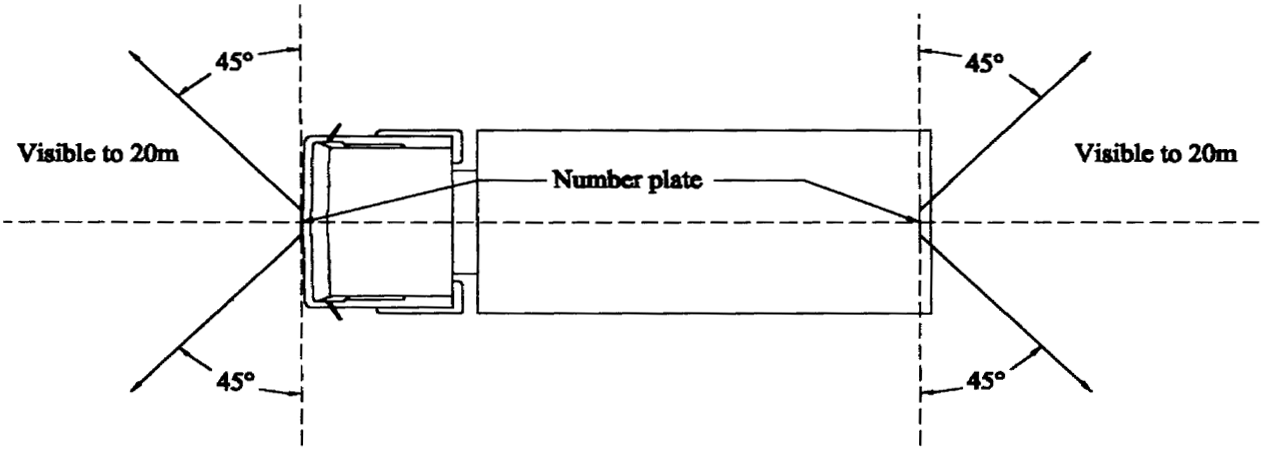Number plate visibility requirements
It is your responsibility to make sure your number plates are visible, kept in good condition and are clearly legible from any position from which they are required to be visible.
Find out about when to replace number plates.
The characters on a number plate must be visible from 20m away at any point within an arc of 45 degrees from the surface of the plate, above or to either side of the vehicle. Plates must not be more than 1.3m above ground level. This is shown in the diagrams below.






Conditionally registered vehicles
If the construction of a conditionally registered vehicle (e.g. a tractor, excavator, forklift or skid steer loader) prevents the number plate from being attached as legally required, it must instead be attached as close as possible to the visibility requirements.
Find more information on number plate requirements.
Drilling holes in number plates
Drilling holes in a number plate is only permitted:
- to enable it to be attached to a vehicle
- if the holes do not interfere with the appearance of any characters on the plate
- if plates are not altered in any way to damage or deface the plate.
Drilling holes in a plate to attach a reversing camera is not permitted.
Number plate covers
If your number plates are fitted with a cover, plate covers must be:
- clear, clean and untinted
- flat on entire plate surface
- non-reflective.
A cover, which includes a frame, must allow for clear space around the plate details and not sit flush to any details, which includes the plate number and the registering state or territory.
Items blocking your number plate
If you have a tow bar on your vehicle that blocks the view of your rear number plate, remove it when you’re not using it. If your vehicle’s tray is in the way, move your number plate to where it can be seen easily.
If you have a vehicle accessory such as a bicycle rack on your vehicle that blocks the view of your number plate, you are required to display an accessory number plate.
A registered trailer is allowed to block the view of your vehicle’s number plates if the trailer’s plates are visible.
Penalties for misuse
You can be fined if your plate details are not visible or clear due to a drilled hole, cover or a frame, or if items are blocking your number plate, or for not replacing damaged or illegible number plates.


